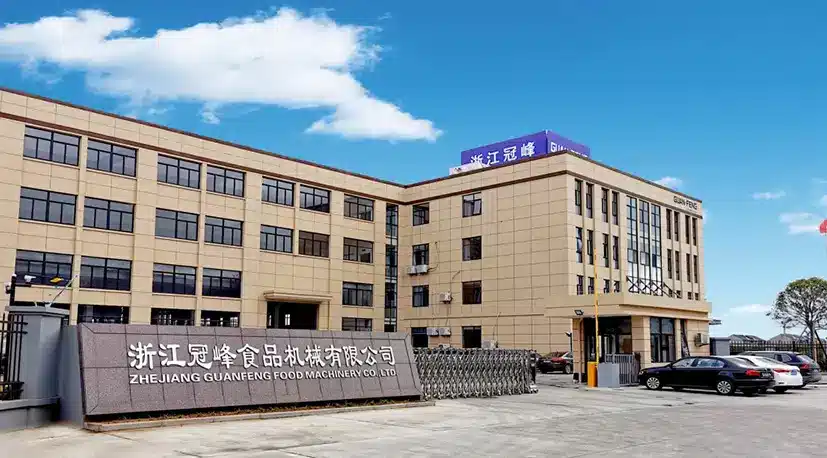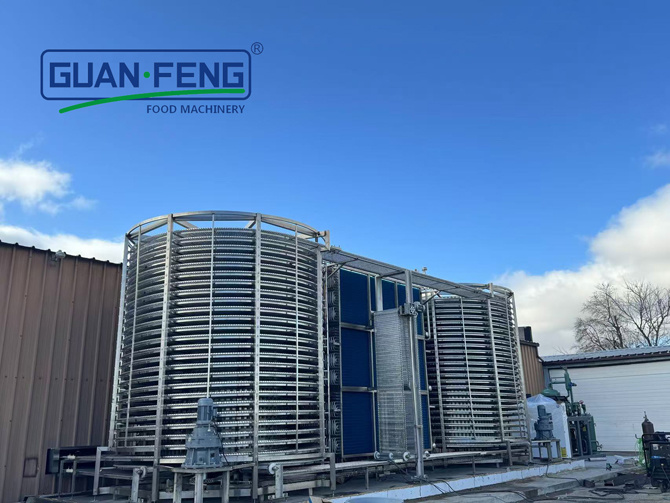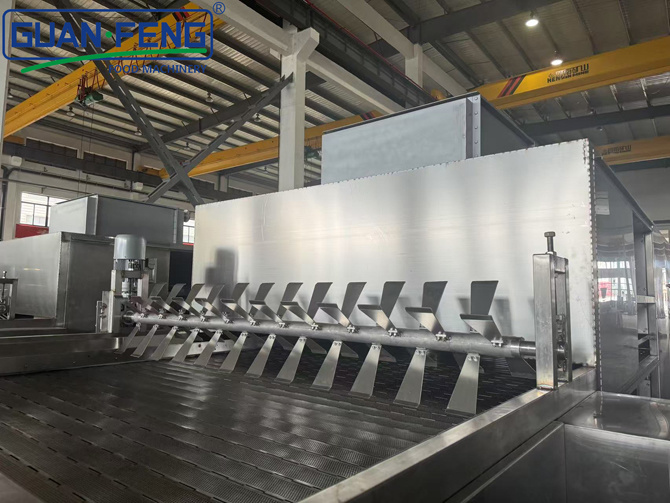BLOG
Focus on hot topics, real-time dynamics
The Science Behind Vegetable Belt Dryers: Understanding Their Mechanism and Applications
The Science Behind Vegetable Belt Dryers: Understanding Their Mechanism and Applications
Table of Contents
- 1. Introduction to Vegetable Belt Dryers
- 2. What Are Vegetable Belt Dryers?
- 3. Mechanism and Technology of Belt Dryers
- 4. Advantages of Belt Drying Technology
- 5. Applications of Belt Dryers in Agriculture
- 6. Comparison with Other Drying Methods
- 7. Maintenance and Best Practices for Belt Dryers
- 8. The Future of Belt Drying Technologies
- 9. FAQs about Vegetable Belt Dryers
- 10. Conclusion
1. Introduction to Vegetable Belt Dryers
Vegetable belt dryers serve a crucial function in the agricultural sector, enabling the efficient drying of a diverse range of vegetables. As the demand for dehydrated products continues to rise, understanding the mechanics behind these machines is essential for producers aiming to optimize their processing capabilities. Through this article, we will dissect the technology, functionality, and advantages of vegetable belt dryers, while also exploring their practical applications within the industry.
2. What Are Vegetable Belt Dryers?
Vegetable belt dryers are specialized drying systems that use a continuous belt conveyor to transport vegetables through a controlled drying environment. The process involves subjecting the vegetables to a stream of hot air, which removes moisture and preserves the product's quality. These dryers can handle a variety of vegetables, making them versatile assets in both small and large-scale operations.
Understanding the Components of Belt Dryers
The primary components of a vegetable belt dryer include:
- **Infeed and Outfeed Sections:** These sections facilitate the entry and exit of vegetables, ensuring a seamless workflow.
- **Heating System:** This system generates hot air that circulates within the drying chamber, crucial for moisture removal.
- **Conveyor Belt:** A continuous belt, often made from durable materials, carries the vegetables through the drying process.
- **Air Circulation System:** This system ensures even distribution of hot air, optimizing drying efficiency.
- **Control System:** Allows operators to adjust temperature, air flow, and drying time based on specific product requirements.
3. Mechanism and Technology of Belt Dryers
Understanding the operational mechanism of vegetable belt dryers reveals their sophistication and efficiency. The process of drying involves several critical steps:
Pre-Treatment of Vegetables
Before entering the dryer, vegetables may undergo pre-treatment processes such as blanching. This step not only helps to maintain color and flavor but also reduces drying time by softening the vegetable tissue.
Hot Air Flow and Temperature Control
Once inside the drying chamber, hot air is blown across the belt, evaporating moisture from the surface of the vegetables. The **temperature** is meticulously controlled to prevent cooking while promoting effective drying. Typically, temperatures range between 40°C to 90°C, depending on the type of vegetable being processed.
Moisture Removal and Evaporation
As moisture evaporates, it is essential to maintain a low humidity level within the chamber. This is achieved through a **ventilation system** that exhausts moist air and replaces it with fresh, hot air, ensuring optimal drying conditions.
Continuous Operation and Efficiency
A significant advantage of vegetable belt dryers is their ability to operate continuously. As vegetables are fed onto the belt, they are dried in a steady, controlled environment, leading to increased throughput and efficiency compared to batch drying systems.
4. Advantages of Belt Drying Technology
The benefits of using vegetable belt dryers extend beyond mere moisture removal. Key advantages include:
Uniform Drying
Belt dryers ensure uniform drying across all vegetables, minimizing the risk of over-drying or uneven moisture content.
Energy Efficiency
With the ability to control air temperature and flow, belt dryers can be more energy-efficient than traditional drying methods, resulting in lower operational costs.
Preservation of Nutritional Value
By employing controlled drying temperatures, belt dryers help preserve the nutritional content of vegetables better than some other methods, making them a healthier option for consumers.
Versatility
Suitable for a wide range of vegetables, including leafy greens, root vegetables, and herbs, these dryers can accommodate various processing needs.
Space Efficiency
Belt dryers are designed to maximize space utilization, making them ideal for facilities with limited floor space.
5. Applications of Belt Dryers in Agriculture
Vegetable belt dryers find applications across numerous agricultural sectors:
Dehydrated Snacks and Ingredients
The increasing demand for dehydrated vegetables in the snack industry has significantly boosted the need for efficient drying solutions.
Food Processing
In food processing, dried vegetables are essential for soups, sauces, and other culinary applications, enhancing flavor and convenience.
Exporting and Storage
Dried vegetables are lighter and less bulky than their fresh counterparts, making them ideal for international shipping and long-term storage.
Herbal Products
Belt dryers are also employed in the herbal industry, where precise drying is crucial for maintaining the quality of herbs used in teas and supplements.
6. Comparison with Other Drying Methods
When assessing the effectiveness of belt dryers, it’s beneficial to compare them to other drying methods such as:
Tray Drying
While tray drying is effective, it typically requires more labor and space, plus it can lead to uneven drying.
Drum Drying
Drum drying can produce rapid results, but it may compromise the quality of the final product, especially in terms of nutritional retention.
Freeze Drying
Though freeze drying preserves nutrients exceptionally well, it is also significantly more expensive and less efficient for large volumes than belt drying.
7. Maintenance and Best Practices for Belt Dryers
To ensure optimal performance and longevity of vegetable belt dryers, regular maintenance is essential.
Routine Cleaning
Keeping the drying chamber and conveyor belt clean prevents contamination and optimizes airflow. Regularly scheduled cleaning should be part of preventive maintenance.
Regular Inspections
Inspecting heating elements, air circulation fans, and control systems helps identify issues before they lead to costly repairs.
Monitoring Performance Metrics
By continuously measuring temperature and humidity levels, operators can adjust settings to maintain efficiency and product quality.
8. The Future of Belt Drying Technologies
The future of vegetable belt drying appears promising, with advancements focusing on energy efficiency, automation, and smart technology integration. Innovations such as IoT-enabled sensors can provide real-time data on drying conditions, leading to improved operational management.
9. FAQs about Vegetable Belt Dryers
What types of vegetables can be dried using belt dryers?
Vegetable belt dryers can effectively process a wide range of vegetables, including leafy greens, root vegetables, and herbs.
How does a vegetable belt dryer improve the quality of dried products?
By controlling temperature and airflow, belt dryers help preserve the nutritional content and flavor of dried vegetables.
What is the average drying time for vegetables in a belt dryer?
Drying times can vary based on the type of vegetable and moisture content, typically ranging from a few hours to over a day.
Are belt dryers energy-efficient compared to other drying methods?
Yes, belt dryers are generally more energy-efficient, allowing for lower operational costs due to controlled drying conditions.
How can I maintain my vegetable belt dryer effectively?
Routine cleaning, regular inspections, and monitoring performance metrics are key practices to ensure optimal performance.
10. Conclusion
In conclusion, vegetable belt dryers represent an innovative and efficient solution for the drying of agricultural products. Their sophisticated mechanisms, combined with the advantages they offer in terms of quality, energy efficiency, and versatility, make them an indispensable tool in the food processing industry. As we look to the future, continued advancements in this technology will enhance its effectiveness further, solidifying its role in the sustainable practices of agricultural processing. Understanding the science behind these machines not only aids producers in maximizing their operations but also contributes to meeting the ever-growing global demand for high-quality dehydrated products.
Hot Tags:
Contact Us
E-mail:
sales@syguanfeng.com
Tel:
+86 15088506234
Address:
South Industrial Park of Dongguan, Shangyu District, Shaoxing City,Zhejiang Province,China.
Related Blog
GUANFENG, your customization experts!
GUANFENG FOOD MACHINERY - leading supplier of integrated food processing solutions
Copyright© 2024 ZHEJIANG GUANFENG FOOD MACHINERY CO.,LTD.










